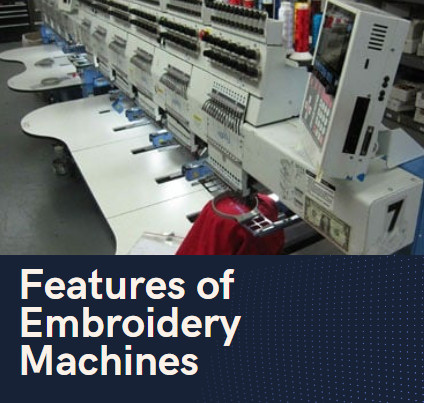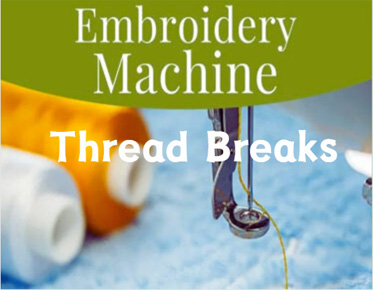Vector Visions: The Advantages of Vector Art in Comics
In the ever-evolving world of comic creation, artists are constantly seeking innovative tools and techniques to bring their visions to life. Among these tools, vector art stands out as a versatile and powerful medium, offering a myriad of advantages for comic illustrators. In this article, we delve into the advantages of vector art in comics, exploring its unique capabilities and transformative impact on the creative process.
What is
Vector Art?
Vector art utilizes mathematical equations to define shapes and lines, resulting in crisp, scalable images. Unlike raster graphics, which are composed of pixels, vector graphics retain their clarity and sharpness regardless of size or resolution. This makes vector artwork an ideal choice for precise and detailed comic illustrations.
Characteristics
of Vector Art
Vector art is characterized by its scalability, resolution independence, and ability to maintain crisp lines and edges at any size. Artists can manipulate vector objects with precision, adjusting shapes and colors seamlessly. This flexibility allows for effortless editing and modifications throughout the comic creation process.
Contrasting
Raster and Vector Art
Raster art, also known as bitmap images, consists of a grid of individual pixels, which can result in pixelation and loss of quality when resized. In contrast, vector art is composed of geometric shapes and paths, ensuring smooth lines and sharp edges regardless of scale. This fundamental difference distinguishes vector art as a superior choice for comic illustration.
Advantages of Vector Art in Comics
Scalability
and Resolution Independence
One of the primary advantages of vector art in comics is its scalability and resolution independence. Vector graphics can be resized infinitely without loss of quality, making them suitable for various print and digital formats. Whether viewed on a small screen or printed as a poster, comics created with vector art maintain clarity and sharpness.
Smooth
Lines and Crisp Edges
Vector art enables artists to achieve impeccably smooth lines and crisp edges, enhancing the visual appeal of comic illustrations. By defining shapes and lines mathematically, vector graphics eliminate the pixelation and jagged edges commonly associated with raster images. This precision and clarity elevate the quality of comic artwork, captivating readers with clean and polished visuals.
Small
File Sizes and Easy Storage
Despite their scalability, vector files maintain small file sizes, making them easy to store and distribute. Unlike raster images, which can become cumbersome with increased resolution, vector graphics remain compact and manageable. This efficiency streamlines the production process and facilitates collaboration among artists and publishers, ensuring smooth workflow.
Flexibility
for Editing and Modifications
Vector art offers unparalleled flexibility for editing and modifications throughout the comic creation process. Artists can easily manipulate individual elements within a vector illustration, adjusting colors, shapes, and proportions with precision and ease. This adaptability empowers creators to refine their compositions iteratively, enhancing the visual narrative without constraints.
Achieving Consistency with Vector Art
Uniformity
in Character Design
Vector art enables artists to maintain uniformity in character design across panels and pages, ensuring visual coherence and consistency throughout the comic. By defining characters as scalable vector objects, artists can effortlessly replicate their appearance in various poses and expressions without compromising quality. This cohesive aesthetic enhances reader immersion and engagement with the narrative.
Seamless
Integration of Backgrounds and Objects
Incorporating backgrounds and objects seamlessly into comic panels is made effortless with vector art. Artists can create intricate environments and props as vector assets, seamlessly integrating them into the scene with precision and clarity. This cohesive visual integration enhances the overall storytelling experience, immersing readers in richly detailed worlds brought to life through vector graphics.
Maintaining
Visual Coherence Across Panels
Consistency in visual style and composition is paramount for maintaining narrative flow and readability in comics. Vector art facilitates the preservation of visual coherence across panels, ensuring that characters, settings, and visual elements remain consistent throughout the story. This uniformity enhances reader comprehension and engagement, fostering a seamless transition from panel to panel.
Streamlining Production Workflow
Efficient
Creation and Manipulation of Assets
Vector art streamlines the creation and manipulation of assets, expediting the comic production process without compromising quality. Artists can leverage vector-based tools to swiftly generate character designs, backgrounds, and objects with precision and efficiency. This accelerated workflow empowers artists to focus their creative energies on storytelling and expression, rather than laborious manual tasks.
Simplified
Coloring and Shading Processes
Coloring and shading become more streamlined and intuitive with vector art, thanks to its inherent flexibility and versatility. Artists can apply gradients, textures, and effects to vector objects with ease, achieving complex visual effects with minimal effort. This simplified coloring process enhances productivity and creative exploration, enabling artists to experiment with various styles and techniques effortlessly.
Facilitating
Collaboration Among Artists and Writers
Vector art facilitates collaboration among artists and writers, fostering a cohesive creative vision and streamlined workflow. By utilizing vector-based software and file formats, team members can easily share and edit assets, providing feedback and revisions in real time. This collaborative approach promotes synergy and cohesion, resulting in comics that seamlessly integrate narrative and visual elements.
Enhancing Accessibility and Adaptability
Compatibility
with Various Devices and Platforms
Vector art offers unparalleled compatibility with various devices and platforms, ensuring accessibility for audiences across diverse channels. Whether viewed on smartphones, tablets, or desktop computers, comics created with vector art maintain clarity and readability at any screen size. This universal accessibility expands the reach of comics to a broader audience, enhancing engagement and enjoyment.
Accessibility
for Differently Abled Audiences
Vector art enhances accessibility for differently abled audiences, thanks to its inherent scalability and clarity. Comics created with vector graphics can be easily resized and magnified to accommodate individual preferences and needs. This inclusivity fosters a more diverse and inclusive comic community, enriching the cultural landscape with diverse perspectives and voices.
Facilitating
Translations and Adaptations
Vector art simplifies the process of translating and adapting comics for international audiences and alternate formats. By separating text and visual elements into editable vector layers, artists can easily swap out dialogue, captions, and sound effects to accommodate different languages and cultural contexts. This adaptability facilitates global distribution and localization, broadening the reach of comics to new markets and audiences.
Optimizing Printing and Publishing
Ensuring
High-Quality Prints at Any Size
Vector art ensures high-quality prints at any size, thanks to its resolution-independent nature and precise linework. Whether reproduced as posters, merchandise, or collectible prints, comics created with vector graphics retain their clarity and detail, captivating audiences with crisp visuals and vibrant colors. This print optimization enhances the value and appeal of comic merchandise, fostering a thriving market for collectors and enthusiasts.
Minimizing
Printing Errors and Artifacts
Vector art minimizes printing errors and artifacts, thanks to its clean lines and scalable resolution. Unlike raster images, which may suffer from pixelation or distortion when resized or printed at high resolutions, vector graphics maintain fidelity and clarity across all print formats. This reliability reduces production costs and ensures consistent print quality, enhancing the overall professionalism and marketability of comics.
Simplifying
Distribution and Licensing Processes
Vector art simplifies distribution and licensing processes for comics, thanks to its compact file sizes and compatibility with digital platforms. Comics created with vector graphics can be easily distributed and licensed for digital download, web publication, or print-on-demand services. This streamlined distribution model expands opportunities for creators to monetize their work and reach audiences worldwide, fostering a vibrant and sustainable comic industry.
Overcoming Challenges of Vector Art in Comics
Learning
Curve for Artists Transitioning from Raster
Transitioning from raster to vector art may present a learning curve for artists accustomed to traditional media or raster-based software. Mastering vector-based tools and techniques requires time and practice, as artists adapt to the unique principles of vector graphics and vector-based software interfaces. However, with dedication and perseverance, artists can unlock the full creative potential of vector art and reap its manifold benefits in comic creation.
Resource-Intensive
Software Requirements
Vector-based software may require substantial computational resources, particularly for complex illustrations and large-scale projects. Artists may need access to powerful computers or specialized hardware to handle the processing demands of vector graphics software effectively. Investing in adequate hardware and software resources is essential for optimizing productivity and performance in vector-based comic production.
Balancing
Artistic Expression with Technical Constraints
While vector graphics offers unparalleled precision and flexibility, artists must navigate technical constraints and limitations inherent to vector graphics. Achieving a balance between artistic expression and technical feasibility is essential for creating compelling and visually engaging comics. Artists may need to adapt their creative process to accommodate vector-based workflows, exploring innovative solutions to overcome technical challenges while preserving artistic integrity.
Conclusion
In conclusion, vector art emerges as a
transformative tool in the creation of comics, offering unparalleled advantages
in scalability, clarity, and efficiency. By harnessing the power of vector
graphics, artists can realize their creative vision with precision and clarity,
captivating audiences with immersive storytelling experiences. As the comic
industry continues to evolve, vector art promises to play an increasingly
integral role in shaping the future of visual narrative storytelling. With
Eagle Digitizing providing expert vector art conversion services, artists can unlock even greater potential, embracing the
possibilities of vector visions and embarking on a journey of artistic
exploration and innovation in the vibrant world of comics.



